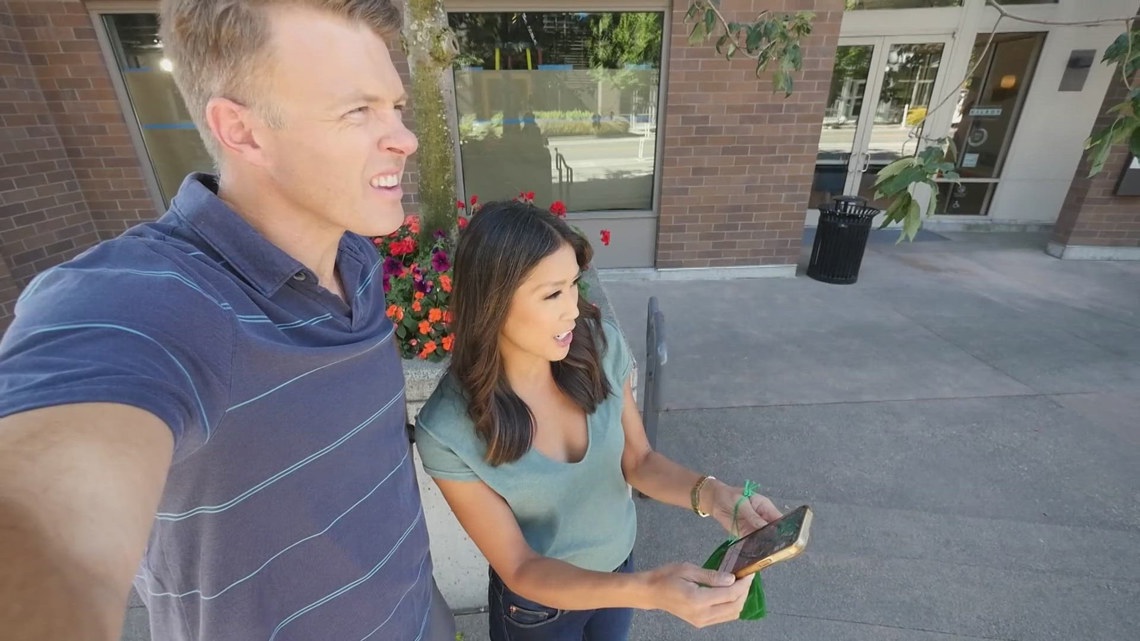
Geocaching is an activity where people hide items for others to find using coordinates and other clues.
SEATTLE — Geocaching celebrates its 25th anniversary this year.
The global game of hide and seek started in May 2000, when the U.S. government flipped a switch that made GPS signals far more accurate for civilian use.
Just one day later, a man named Dave Ulmer hid a container in the woods near his home in Beavercreek, Oregon and posted the coordinates on a website. Within just a few days, the container had been found by two people and the activity of geocaching had been born. He called it the “Great American GPS Stash Hunt.”
What started as one container hidden in the Oregon wilderness quickly grew as outdoor enthusiasts and tech fans began hiding and seeking their own “caches.” Within months, the activity earned a new name: geocaching.
The nerve center of this worldwide hobby is Geocaching HQ, tucked into Seattle’s Fremont neighborhood. That’s where Jake Whittenberg and Mimi Jung recently toured to mark the 25th anniversary. The headquarters is equal parts office and community hub, where staff maintain the website and app, support millions of players, and help organize international events.
Bryan Roth, along with two of his friends in tech, founded Geocaching HQ with a desire to share the joy of geocaching with the world. The website they created, Geocaching.com, launched in 2000 and quickly became the central hub for the growing community.
There are more than three million active caches hidden in cities, parks and even underwater — and in almost every country in the world. Millions of geocachers use GPS devices or smartphone apps to track down these caches. Some hold small toys or collectibles. Others are part of elaborate puzzles and themed adventures. No two caches are the same, and that variety has helped keep the game fresh across decades.
“People hide boxes, whether it’s a Tupperware box or a little pill container or something bigger or something camouflaged. They post the coordinates of that box online where they’ve hidden it, and then other people go out and try and find it using the geocaching app,” explained Roth.
Jake and Mimi tried to find their first cache just a few blocks away from Geocaching HQ in Fremont. Using the app, they navigated to within 30 feet of the cache. The only hint? A verse from the Bible — Luke 2:42. It took about 10 minutes of searching, but they eventually found the hidden container.
For newcomers and seasoned adventurers alike, geocaching remains a unique blend of technology, exploration, and community. And after 25 years, the thrill of the hunt is still going strong.





